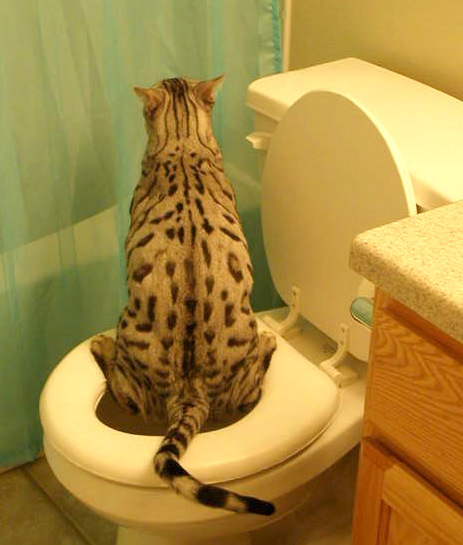Dangers of Flushing Cat Poop Down Your Toilet - Avoid Potential Issues
Dangers of Flushing Cat Poop Down Your Toilet - Avoid Potential Issues
Blog Article
Just how do you feel on the subject of Can You Flush Cat Poop Down The Toilet??

Introduction
As cat owners, it's necessary to be mindful of just how we take care of our feline good friends' waste. While it might seem convenient to purge feline poop down the toilet, this practice can have destructive repercussions for both the setting and human health and wellness.
Environmental Impact
Purging feline poop introduces harmful virus and bloodsuckers into the water supply, posturing a considerable risk to water ecological communities. These impurities can adversely impact aquatic life and compromise water top quality.
Wellness Risks
In addition to environmental problems, flushing pet cat waste can also present wellness threats to people. Feline feces might have Toxoplasma gondii, a bloodsucker that can trigger toxoplasmosis-- a possibly extreme illness, especially for expecting ladies and individuals with damaged body immune systems.
Alternatives to Flushing
Thankfully, there are more secure and extra responsible methods to take care of cat poop. Think about the complying with choices:
1. Scoop and Dispose in Trash
The most usual method of getting rid of pet cat poop is to scoop it right into an eco-friendly bag and throw it in the trash. Be sure to use a devoted trash scoop and dispose of the waste promptly.
2. Use Biodegradable Litter
Choose naturally degradable feline trash made from materials such as corn or wheat. These litters are environmentally friendly and can be safely gotten rid of in the trash.
3. Hide in the Yard
If you have a lawn, think about hiding feline waste in an assigned area away from vegetable yards and water resources. Make certain to dig deep sufficient to avoid contamination of groundwater.
4. Mount a Pet Waste Disposal System
Purchase a family pet waste disposal system particularly developed for cat waste. These systems use enzymes to break down the waste, lowering smell and ecological effect.
Final thought
Responsible animal ownership extends past supplying food and shelter-- it also entails appropriate waste management. By avoiding flushing feline poop down the commode and going with different disposal approaches, we can minimize our environmental impact and protect human health.
Why Can’t I Flush Cat Poop?
It Spreads a Parasite
Cats are frequently infected with a parasite called toxoplasma gondii. The parasite causes an infection called toxoplasmosis. It is usually harmless to cats. The parasite only uses cat poop as a host for its eggs. Otherwise, the cat’s immune system usually keeps the infection at low enough levels to maintain its own health. But it does not stop the develop of eggs. These eggs are tiny and surprisingly tough. They may survive for a year before they begin to grow. But that’s the problem.
Our wastewater system is not designed to deal with toxoplasmosis eggs. Instead, most eggs will flush from your toilet into sewers and wastewater management plants. After the sewage is treated for many other harmful things in it, it is typically released into local rivers, lakes, or oceans. Here, the toxoplasmosis eggs can find new hosts, including starfish, crabs, otters, and many other wildlife. For many, this is a significant risk to their health. Toxoplasmosis can also end up infecting water sources that are important for agriculture, which means our deer, pigs, and sheep can get infected too.
Is There Risk to Humans?
There can be a risk to human life from flushing cat poop down the toilet. If you do so, the parasites from your cat’s poop can end up in shellfish, game animals, or livestock. If this meat is then served raw or undercooked, the people who eat it can get sick.
In fact, according to the CDC, 40 million people in the United States are infected with toxoplasma gondii. They get it from exposure to infected seafood, or from some kind of cat poop contamination, like drinking from a stream that is contaminated or touching anything that has come into contact with cat poop. That includes just cleaning a cat litter box.
Most people who get infected with these parasites will not develop any symptoms. However, for pregnant women or for those with compromised immune systems, the parasite can cause severe health problems.
How to Handle Cat Poop
The best way to handle cat poop is actually to clean the box more often. The eggs that the parasite sheds will not become active until one to five days after the cat poops. That means that if you clean daily, you’re much less likely to come into direct contact with infectious eggs.
That said, always dispose of cat poop in the garbage and not down the toilet. Wash your hands before and after you clean the litter box, and bring the bag of poop right outside to your garbage bins.
https://trenchlesssolutionsusa.com/why-cant-i-flush-cat-poop/

We were shown that editorial on How to Dispose of Cat Poop and Litter Without Plastic Bags through an acquaintance on our other blog. For those who enjoyed our blog posting plz be sure to share it. I treasure reading our article about How to Dispose of Cat Poop and Litter Without Plastic Bags.
Estimate Free Report this page